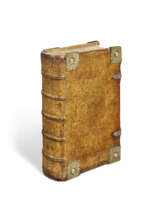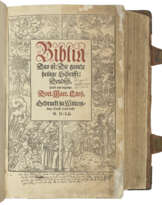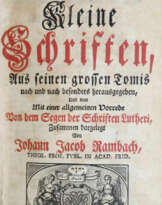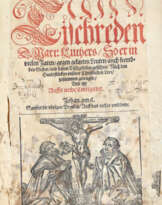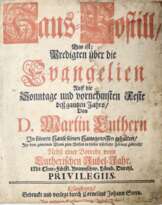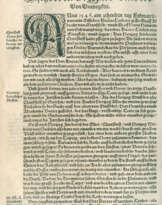ID 1349750
Lot 114 | BIBLE, in German
Estimate value
£ 200 000 – 300 000
BIBLE, in German. Translated by Martin LUTHER (1483-1546). Biblia, das ist, die gantze Heilige Schrifft Deudsch. Wittenberg: Hans Lufft, 1534.
Luther’s complete German Bible, the foundational work of Protestantism; the only copy to appear on the market in over a century. It immediately became the most widely read book in Germany, leaving a cultural and linguistic legacy still felt today. For Luther the Bible alone was decisive in matters of faith, and was one of his two fundamental tenets: sola fide (man’s justification through faith alone) and sola scriptura (scripture alone is the most important authority in faith). He therefore strove to provide a translation that would touch the heart as well as the head, ‘to use language that is clear and that everybody can understand’ (preface to Job). He and his team thus deliberated over each word and phrasing, sometimes spending days polishing just a few lines. The impact of his Bible was immediate. It quickly sold out, despite its high cost, and by 1546 over 243 full or partial editions of his Bible translations were in print.
Luther’s complete German Bible was preceded into print by his translation of the New Testament in 1522 and individual books of the Old Testament which followed slowly, but it was only 12 years later in 1534 that Luther was finally able to realise his ambition to publish a complete Bible in a wholly new translation into German, based on Greek, Hebrew, Aramaic and Latin originals. He and his team of fellow translators at Wittenberg, principally Justus Jonas and Philip Melanchthon, revised their previously published translations for the complete 1534 edition.
Luther’s translation had a significant impact on the development of the German language by choosing a vocabulary and phrasings that transcended regionalism and social hierarchy. Some early editions of his New Testament were accompanied by glossaries to teach regionally unfamiliar words. He also standardised modern characteristics of the language, such as the capitalization of nouns and the wide use of compound words and introduced neologisms such as gottselig (devout), Menschenfischer (fisher of men), Blutgeld (blood money). The supranational language in turn contributed materially to the development of the German nation. Grimm credited Luther with creating the written German language and thereby fostering a sense of community. It spawned subsequent translations into the vernacular in English, Dutch, Danish, Swedish and Icelandic. (See H-J. Solms, ‘Luther and the German Language’, Martin Luther and the Reformation, exhib. cat. 2017, pp.124-131.)
Martin Luther was closely involved in all aspects of the Bible, including overseeing the illustrations. A new series of woodcuts were commissioned in 1532 by the then publisher in 1532; some woodcuts are signed MS and dated 1532, and others are attributed to Hans Holbein the Younger, Lucas Cranach the Elder and Melchior Schwarzenberg (Martin Luther and the Reformation, exhib. cat.). As reported by a press corrector, ‘Luther partly determined the illustrations in the Wittenberg Biblia himself, how they should be sketched or painted, and ordered to sketch and copy the text in the simplest manner, and would not tolerate that a superfluous and unnecessary thing be added, that would not serve the text’ (Füssel, citing WE Bible, vol. 6, p.87).
RBH cites only 3 fragmentary copies on the market in over a century (1991, 1935, 1933). D&M 4199; Kind, Lutherdrucke, 1113; VD16 B 2694; S. Füssel, The Book of Books, The Luther Bible of 1534, commentary accompanying the Taschen facsimile edition, 2003.
6 parts in 2 volumes, folio (325 x 200mm). 913 leaves (of 918; lacking 2 title-pages supplied in both coloured and uncoloured facsimiles, P6 in facsimile [last leaf of vol. I, Song of Solomon], and without blank i4 and blank conjugate of part-title to part 2, but with all other blank leaves. 117 woodcut illustrations by Master MS, Hans Holbein the Younger, Lucas Cranach the Elder and Melchior Schwarzenberg, including a full-page woodcut of Creation, a few cuts with light colour, and 10 ornamental initials, woodcut figure of Joshua on pt. 2 title from the Cranach workshop; an additional coloured facsimile Creation cut inserted. (Small wormholes/-tracks with minor loss, 2 leaves with neat tears into text, Creation woodcut cut down and mounted, fore-edges of first and last few quires of vol. 1 and a few in vol. 2 repaired with minor loss, other scattered repairs sometimes with minor loss, scattered light staining and spotting.) Modern blindstamped pigskin over wooden boards tooled to a late-medieval design incorporating the arms of the Electorate of Saxony, upper covers lettered ‘Biblia 1534’, metal corner and centrepieces, 2 fore-edges clasps. Provenance: extensively annotated by several hands in German and Latin, early annotations listing books of the Bible and other notes, including one referencing George Spalatin dated 1540, preserved on pastedowns – Bartholomaeus Craatz, preacher in (?)Topkoniaz (early inscription).
| Auction house category: | Books and manuscripts, Printed books |
|---|
| Auction house category: | Books and manuscripts, Printed books |
|---|
| Address of auction |
CHRISTIE'S 8 King Street, St. James's SW1Y 6QT London United Kingdom | |
|---|---|---|
| Preview |
| |
| Phone | +44 (0)20 7839 9060 | |
| Buyer Premium | see on Website | |
| Conditions of purchase | Conditions of purchase |
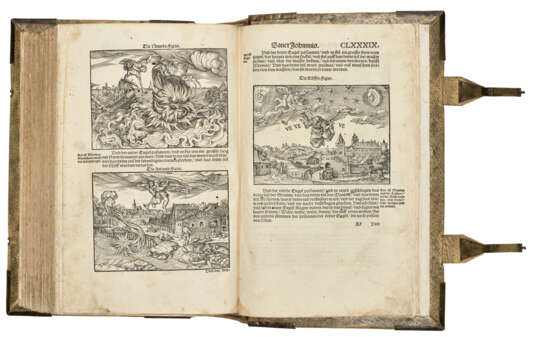
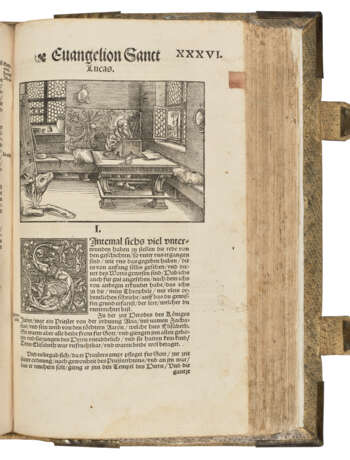
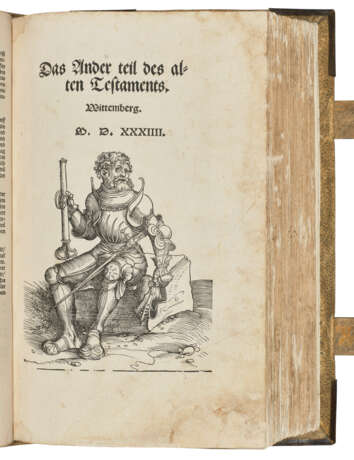
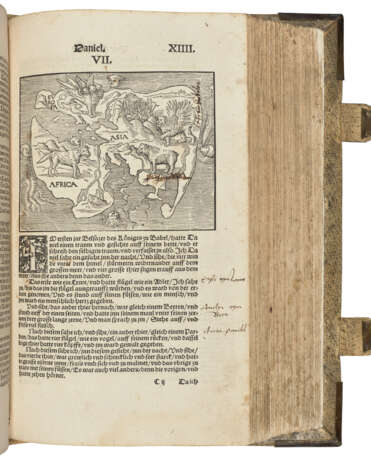
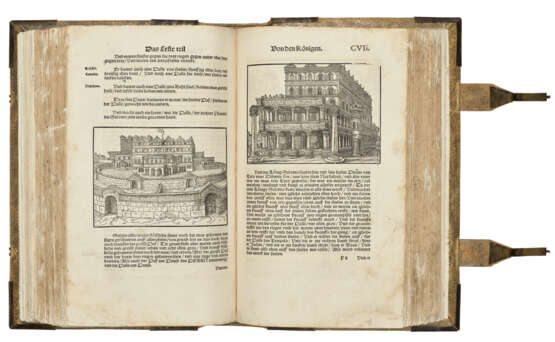
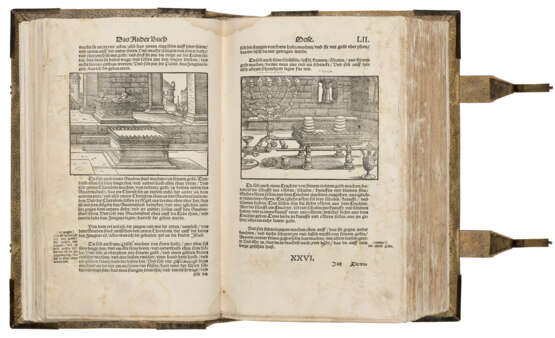
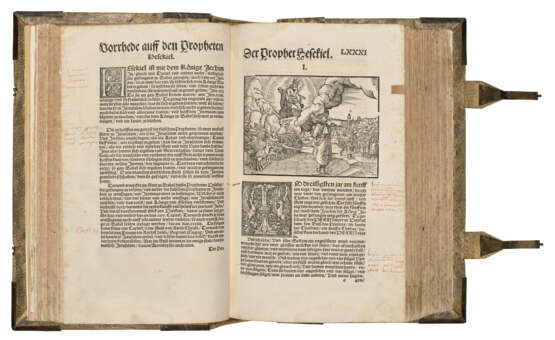
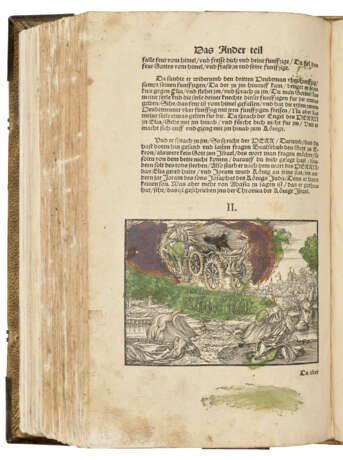
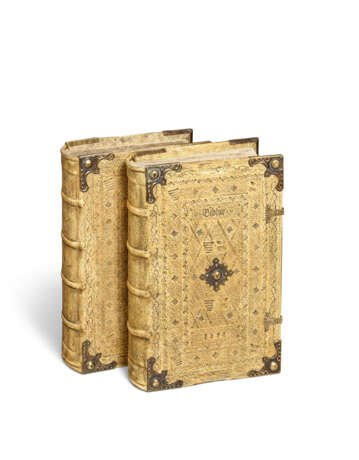

![[LUTHER, Martin (1483-1546) et Hans HOLBEIN LE JEUNE (1497-1543)]](/assets/image/picture_4259584/775b8/3kd5xdxacqau4prgw6y1t5z6soba3uzal9wflgdoxiuf7gnfilk7wkak9f9moah1729408928jpg__fix_162_205.jpeg)
